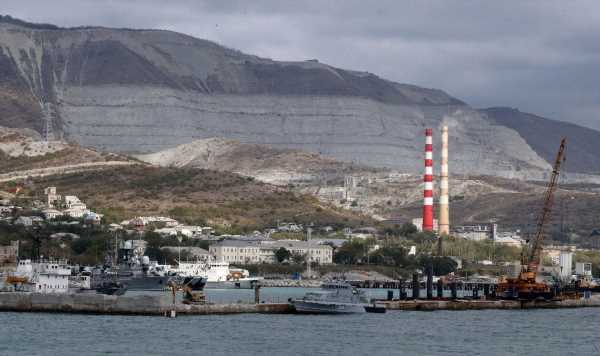Heatwaves ARE becoming more intense and more frequent due to climate change – but severe droughts CANNOT be blamed on global warming, scientists claim
- Climate change is making heatwaves more intense and more likely, study finds
- Scientists say impact of lives lost and financial costs are being underestimated
- But severe droughts in many parts of world cannot be blamed on climate change
- Extreme weather has caused large number of deaths and cost billions in damage
Climate change has made heatwaves more intense and more likely, scientists have warned, with extreme weather causing a huge number of deaths and billions of pounds in damage.
In the last three months, monsoon rains unleashed disastrous flooding in Bangladesh, and brutal heatwaves seared parts of South Asia and Europe.
Meanwhile, prolonged drought has left millions on the brink of famine in East Africa.
A review of extreme weather hazards shows that for some, such as heatwaves, it is ‘unequivocal’ they are worsening because of global warming, and the impact in terms of lives lost and financial costs are being underestimated.
For others, including tropical cyclones, there are variations between regions and the role that climate change plays in each event.
But severe droughts in many parts of the world are not due to climate change, according to a review by scientists from University of Oxford, Imperial College London and the Victoria University of Wellington, New Zealand.
Climate change has made heatwaves more intense and more likely, scientists have warned, with extreme weather causing a huge number of deaths and billions of pounds in damage
HOW MANY MORE PEOPLE WILL DIE?
Large numbers of people are being displaced by worsening weather extremes. And the world’s poor are being hit by far the hardest, the UN Intergovernmental Panel on Climate Change report stated earlier this year.
More people are going to die each year from heat waves, diseases, extreme weather, air pollution and starvation because of global warming, the report said.
Just how many people die depends on how much heat-trapping gas from the burning of coal, oil and natural gas gets spewed into the air and how the world adapts to an ever-hotter world, scientists say.
‘Climate change is killing people,’ said co-author Helen Adams of King’s College London.
‘Yes, things are bad, but actually the future depends on us, not the climate.’
With every tenth of a degree of warming, many more people die from heat stress, heart and lung problems from heat and air pollution, infectious diseases, illnesses from mosquitoes and starvation, the authors said.
They looked at information from the latest reports from the UN’s Intergovernmental Panel on Climate Change (IPCC) and results from the growing body of attribution studies, which use weather observations and climate models to identify the role of global warming in specific events.
Study co-author Dr Friederike Otto, of Imperial College London, said it was ‘absolutely’ the case that climate change was already making heatwaves more likely and intense.
‘We can very confidently say that every heatwave that is occurring today is made more intense and more likely because of climate change.
‘There are local factors like land use changes that might change how much more likely, but there’s no doubt climate change is really an absolute gamechanger when it comes to heatwaves around the world,’ she added.
However, in other extremes, such as drought, the role of climate change is overestimated.
Dr Otto pointed to East Africa, which has a naturally highly variable climate that contributes to drought, and warned that disaster there was linked to poverty and lack of health care systems and infrastructure.
The study authors say there is a need to record the impact of extreme weather far more systematically around the world, as a lack of data on previous events makes it harder to cope with future extremes.
Lead author Ben Clarke, of the University of Oxford, said: ‘The rise of more extreme and intense weather events such as heatwaves, droughts and heavy rainfall have dramatically increased in recent years, affecting people all over the globe.
‘Understanding the role that climate change plays in these events can help us better prepare for them. It also allows us to determine the real cost that carbon emissions have in our lives.’
In general, a heatwave that previously had a 1 in 10 chance of occurring is now nearly three times as likely — and peaking at temperatures around 1 degree Celsius higher — than it would have been without climate change.
An April heatwave that saw the mercury climb above 122°F (50°C) in India and Pakistan, for example, was made 30 times more likely by climate change, according to the climatologists leading the international research collaboration World Weather Attribution.
Heatwaves across the Northern Hemisphere in June — from Europe to the US — show that ‘the frequency of heatwaves has gone up so much,’ Dr Otto said.
Overall, episodes of heavy rainfall are also becoming more common and more intense because warmer air holds more moisture, so storm clouds are ‘heavier’ before they eventually break.
However, the impact varies by region, with some areas not receiving enough rain, the study suggests.
Last week, China saw extensive flooding, following heavy rains, while Bangladesh was hit with a flood-triggering deluge.
Scientists have a harder time figuring out how climate change affects drought.
Some regions have suffered ongoing dryness, with warmer temperatures to the west of the US melting the snowpack faster and driving evaporation.
And while East African droughts have yet to be linked directly to climate change, scientists say the decline in the spring rainy season is tied to warmer waters in the Indian Ocean.
This causes rains to fall rapidly over the ocean before reaching the Horn.
Heatwaves and drought conditions are also worsening wildfires, particularly megafires — which are those that burn more than 100,000 acres.
Fire raged across the US state of New Mexico in April, after a controlled burn set under ‘much drier conditions than recognized’ got out of control, according to the US Forest Service. The fires burned 341,000 acres.
On a global scale, the frequency of storms hasn’t increased, the researchers said, but cyclones are now more common in the central Pacific and North Atlantic.
They are less common in the Bay of Bengal, western North Pacific and southern Indian Ocean, the study added.
There is also evidence that tropical storms are becoming more intense and even stalling overland, where they can deliver more rain on a single area.
So while climate change might not have made Cyclone Batsirai any more likely to have formed in February, it probably made it more intense, capable of destroying more than 120,000 homes when it hit Madagascar.
The new research has been published in the journal Environmental Research: Climate.
THE PARIS AGREEMENT: A GLOBAL ACCORD TO LIMIT TEMPERATURE RISES THROUGH CARBON EMISSION REDUCTION TARGETS
The Paris Agreement, which was first signed in 2015, is an international agreement to control and limit climate change.
It hopes to hold the increase in the global average temperature to below 2°C (3.6ºF) ‘and to pursue efforts to limit the temperature increase to 1.5°C (2.7°F)’.
It seems the more ambitious goal of restricting global warming to 1.5°C (2.7°F) may be more important than ever, according to previous research which claims 25 per cent of the world could see a significant increase in drier conditions.
The Paris Agreement on Climate Change has four main goals with regards to reducing emissions:
1) A long-term goal of keeping the increase in global average temperature to well below 2°C above pre-industrial levels
2) To aim to limit the increase to 1.5°C, since this would significantly reduce risks and the impacts of climate change
3) Governments agreed on the need for global emissions to peak as soon as possible, recognising that this will take longer for developing countries
4) To undertake rapid reductions thereafter in accordance with the best available science
Source: European Commission
Source: Read Full Article



